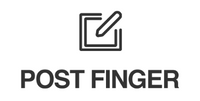Safeguard Your Instagram: Spotting and Avoiding the Latest Copyright Infringement Scam

In the vast landscape of phishing scams, there’s a new wave targeting Instagram users that’s both clever and potentially damaging. In this blog post, we’ll delve into the details of the latest Instagram copyright infringement scam, shedding light on the tactics scammers use to trick users into compromising their accounts.
The Scam Unveiled
Recently reported by Trustwave, scammers are posing as Meta, the parent company of Instagram, and sending alarming emails claiming users’ accounts are infringing copyrights. The urgency is heightened with a threat of account deletion within 12 hours if users fail to appeal the alleged copyright violation.
Identifying Red Flags
To the discerning eye, there are clear signs that this email is a scam. The impersonation is almost perfect, with the Meta logo accurately replicated. However, subtle discrepancies, such as generic salutations like “Hi! Dear [Your Name]” and misleading directions like “Click ‘Go to Form'” instead of the actual button text “Go to appeal form,” may tip off savvy users.
The Deceptive Appeal Process
Those who fall for the scam are directed to a fake Meta “Violation Status Central Portal” to initiate their appeal. Here, the scammers aim to acquire sensitive information. After obtaining the Instagram username and password, the next request is for the user’s backup code if two-factor authentication (2FA) is enabled.
Understanding Two-Factor Authentication and Backup Codes
Two-factor authentication is a crucial security measure that sends a code to a trusted device when logging into an account. In instances where access to the trusted device is unavailable, services like Instagram provide backup codes—single-use codes functioning similarly to 2FA.
The Scammers’ Endgame
By tricking users into providing their backup codes, scammers gain the means to access the targeted Instagram accounts. Once inside, they can reset passwords and codes, effectively locking users out of their own accounts.
Protecting Yourself from Phishing Scams
As phishing scams persist, it’s essential to adopt vigilant practices
Check Sender Domains
Always scrutinize the sender’s domain. Scammers often replace their name with the impersonated company (Meta), but checking the full domain can reveal the deception.
Verify Links
Hover over links to inspect their URLs before clicking. Legitimate links should lead to familiar domains related to Meta or Instagram, not a jumble of random characters.
Spot Spelling and Formatting Issues
Billion-dollar companies maintain professionalism in their communications. Poor grammar, spelling mistakes, or amateur formatting are telltale signs of a phishing attempt.
Exercise Caution with Clicks
If you mistakenly click a link, refrain from downloading anything or providing information. Close the window immediately to mitigate potential risks.
Direct Verification
When in doubt, contact the supposed sender directly. If Instagram prompts a login, access the site independently. Always confirm requests, especially those involving sensitive information like passwords and backup codes.
What Is the Instagram Copyright Infringement Scam?
The Instagram copyright infringement scam involves fraudulent activities where scammers falsely accuse users of violating copyright laws. These scammers typically claim that your content, whether it’s a photo, video, or graphic, infringes on someone else’s intellectual property. They often use threatening language to coerce you into paying a fine or providing personal information under the guise of resolving the alleged infringement.
How the Scam Works
- Fake Copyright Notices: Scammers send emails or direct messages claiming to be from Instagram or a copyright enforcement agency. These notices often include threats of account suspension or legal action if you do not comply.
- Phishing Links: The messages typically contain links that lead to fake websites designed to harvest your personal information. These sites might mimic official Instagram or legal websites to appear legitimate.
- Payment Demands: To add pressure, scammers might demand immediate payment to settle the alleged infringement. They use scare tactics to make you believe that failing to pay will result in severe consequences.
How to Spot a Copyright Infringement Scam
- Verify the Source: Official communications from Instagram or legal entities will come from verified accounts or official email addresses. Check the sender’s email address carefully and compare it with known official addresses.
- Look for Red Flags: Be wary of urgent or threatening language. Legitimate copyright notices usually come with proper documentation and a clear explanation of the issue.
- Check for Phishing Links: Hover over any links in the message to see if they lead to a genuine website. Avoid clicking on links or downloading attachments from unknown or suspicious sources.
- Contact Instagram Directly: If you receive a copyright notice that seems suspicious, contact Instagram directly through their official support channels to verify its legitimacy.
How to Protect Yourself from Copyright Infringement Scams
- Enable Two-Factor Authentication: Secure your Instagram account by enabling two-factor authentication. This adds an extra layer of security and helps prevent unauthorized access.
- Be Cautious with Personal Information: Never share personal or financial information in response to unsolicited messages. Legitimate organizations will not ask for sensitive information in this manner.
- Educate Yourself: Stay informed about common scams and fraud tactics. Awareness is your first line of defense against falling victim to scams.
- Report Suspicious Activity: If you encounter a scam, report it to Instagram and any relevant authorities. Reporting helps protect others from similar threats.






